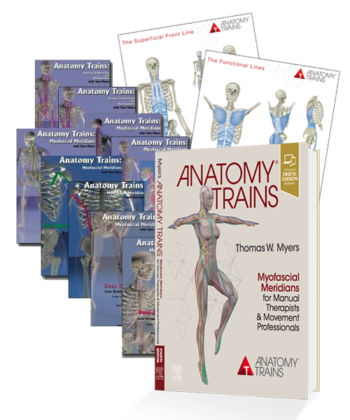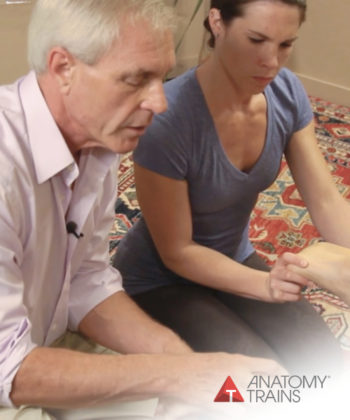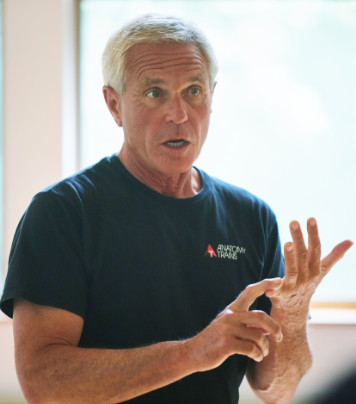It was a great pleasure to attend Gil Hedley’s Nerve Tour in Portland, Maine, last night. With his characteristic flair, Gil unfolds a complete anatomy of our neural net, woven with a unique and touching story of ‘Captain’ – the model for much of the project – and the involvement of his family and other… Read more
PHYSICAL THERAPY
Whole-body participation is the key to effective rehabilitation or performance enhancement. The perpetuating factor is often not where the pain is – Learn to see where lack of movement in one area is causing overstrain and pain in another. Anatomy Trains can help you see the overall pattern and assess ‘what’s missing’ in movement.
How Do I Start?
Kickoff your education with Anatomy Trains by reading Anatomy Trains Fourth Edition by Tom Myers. You’ll learn how the muscles are functionally linked in ‘myofascial meridians’ through the fascial webbing.
We also have a great collection of On Demand Learning courses geared towards manual therapists on our website here.
Featured Blog Posts
Read the latest news from Tom Myers and Anatomy Trains
Q & A with Tom Myers: Electric Massage Tools?
Question from a follower on social media: Hi! I love the work of Tom Myers. Could he discuss his views on electric massage tools? Tom: Thanks for the question! Three levels of answer: 1) I am an advocate for the human hand – for human touch, its skill and its comfort and connection to a… Read more
Anatomy Trains Structural Integration Certification Training Program on the West Coast!
We are thrilled to invite you to take your career to the next level with Anatomy Trains Structural Integration (ATSI) certification training, led by Anatomy Trains author Tom Myers in San Diego, California, in 2024! “The program exceeded my expectations. It gave me a recipe that I can follow to make sure I am taking… Read more
Anatomy Trains Highlighted in Netflix Docuseries ‘Quarterback’
We are so excited to see Anatomy Trains Myofascial Meridians Posters highlighted in the Netflix docuseries Quarterback! Our team is thrilled to see Dr. Ann Stark using myofascial release techniques in these photos taken from episode 3 of the Netflix series. Providers like Dr. Stark have told us that the principles of Tom Myers’ Anatomy… Read more




